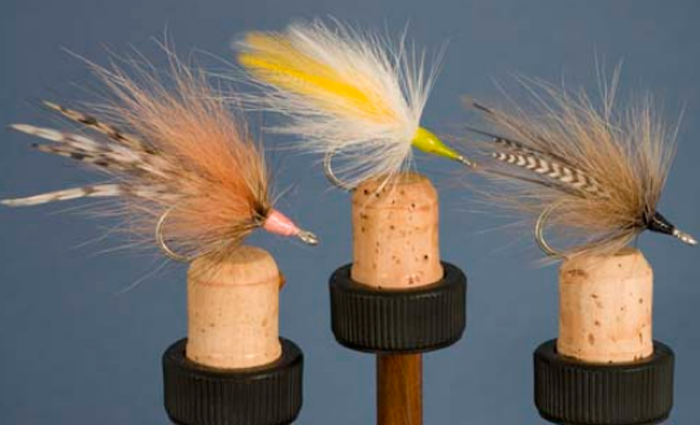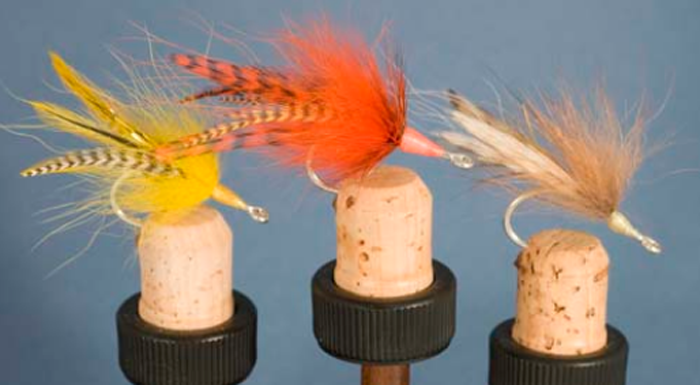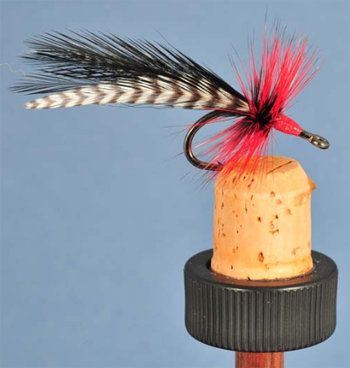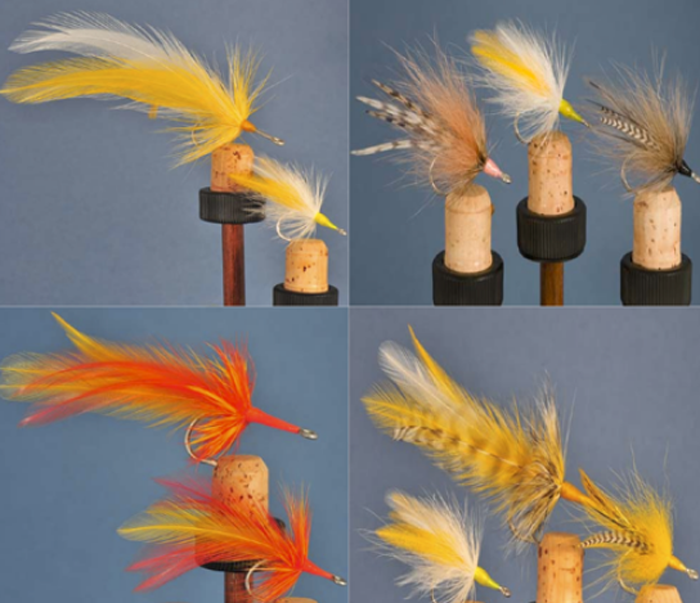
Peaches, EMT and Sand Devil variant – Don Reed
By Don Reed
[dropcap]S[/dropcap]ome guide/tyers go minimalist and tie three feather flies. They’re so sparse that it’s hard to believe that an 80-pound tarpon would even bother with it, but they eat them. Others use new materials in the construction of the same splayed wing flies; things like fox fur collars, and Finnish raccoon – things that move under water like they are alive, even on the pause.

Sunrise, Orange Crab, Tan Shrimp – Don Reed
Adaptation is the answer to hooking these magnificent giants on the fly. Often, in the gin clear oceanside flats of the Florida Keys, smaller, more sparsely tied flies seem to be the answer. Outback (backcountry), where there is more stain in the water, slightly larger, heavier dressed flies will take big fish, but the key in both instances is to give them something they have not seen before and always remember that these creatures have been around much longer than you or me.

Black Death – Don Reed
Today’s Divided Wing Tarpon Streamers are generally tied using neck hackle. One to three feathers is tied on a side with the curved side out creating a kicking movement on the strip retrieve.
NOTE: Use a 1/0 Gamakatsu SL12S or a 1/0 Owner Aki for the hook on the ocean side of the Florida Keys or 2/0 for the backcountry (Everglades National Park – Florida Bay and beyond).
Oceanside in the Florida Keys, flies should be no longer than 2-inches, and backcountry flies a little longer. Most of the flies are tied with a palmered collar, slightly laid back with thread wraps. The collar makes a sound signature fish instinctively move to it if it does not have a more significant prey signature.
This is a basic description, and any variation or addition may make it the new hot fly. So innovate, adapt, modify and have some fun.


